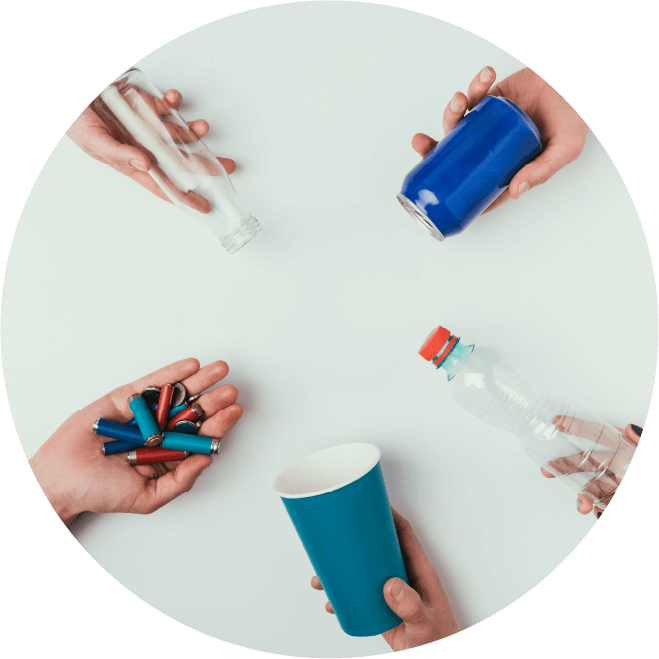What Does a Circular Economy Lifestyle Look Like?
Starting with Four Everyday Actions
Have you ever heard the term
“Circular Economy”?
In Japanese, it’s translated as junkan keizai, literally meaning an economy where everything circulates in continuous loops. Think of it as a “round economy” — one in which products are designed to minimize waste, used for as long as possible by repairing or passing them on, and even when they can no longer be used, their materials are brought back to life as new resources.
In the conventional economic model, resources have followed a linear path of TAKE, USE, and DISPOSE. This not only costs money but also places a heavy burden on the global environment. The Circular Economy, by contrast, focuses on designing products that generate no waste, using them for longer, and finding new value in what has already served its purpose — reducing environmental impact while driving innovation.
So, what specific actions are needed to bring the Circular Economy to life?
The answer is surprisingly simple — it’s about connecting four everyday actions: BUY, USE, SORT, and PASS ON. Together, these make up what’s known as circular consumption behavior.
You might think, “The economy doesn’t really concern me,” or “This all sounds a bit complicated.” But in reality, the small choices we make every day are deeply connected to this circular system.
Let’s take a closer look at how these actions work in practice through the Circular Economy Lab, an event organized by Japan’s Ministry of Economy, Trade and Industry at Expo 2025 Osaka, Kansai, from September 23 to 29, 2025. By the time you finish reading this article, you may find that your perspective on how you relate to the things you own has started to change.



Is the Circular Economy
just about recycling?
When people think about environmental issues, they often think of the “3Rs” — reduce, reuse, recycle. But the Circular Economy goes far beyond that, taking a broader view of the entire flow of materials and products.
That’s where the four aspects of circular consumption behavior come in: BUY, USE, SORT, and PASS ON.
How do we obtain products? How do we use them? When they’ve served their purpose, how do we sort or separate them? And how can we return them to circulation as resources afterward? By consciously connecting these four actions, things can truly begin to circulate in the full sense of the word.
In other words, it’s not enough to focus only on recycling. What matters is that each of us considers the entire lifecycle of consumption — from beginning to end.
So, let’s take a fresh look at our daily lives through these four lenses.


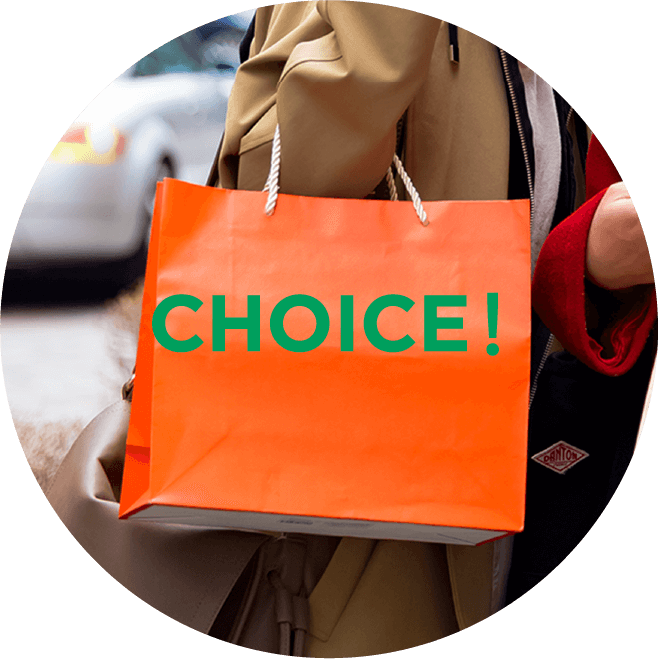
− BUY −Your purchases are the
first step toward circularity
When you go shopping, what guides your decisions? Price, design, functionality — there are many factors to consider. But try adding one more question to your checklist:
“Does this purchase truly meet what I really need?”
For instance, suppose you need a suitcase for a three-day trip and want to keep costs down. Which of the following would you choose?
- A lockable suitcase for peace of mind: ¥10,000
- A compact suitcase without a lock: ¥5,000
- A secondhand suitcase without a lock and with slight scratches: ¥3,000
- A lockable suitcase rental (for two days): ¥5,000
When we need something, our first instinct is often to buy new. But if we stop to ask ourselves what we truly need, new options begin to appear.
In other words, when it comes to “buying,” there are many choices beyond new products — secondhand, refurbished, rental, or subscription-based options. Thoughtfully selecting only what we genuinely need, and only as much as we need, may seem simple but is often overlooked. Yet this mindful habit is the crucial first step in putting the Circular Economy into practice.
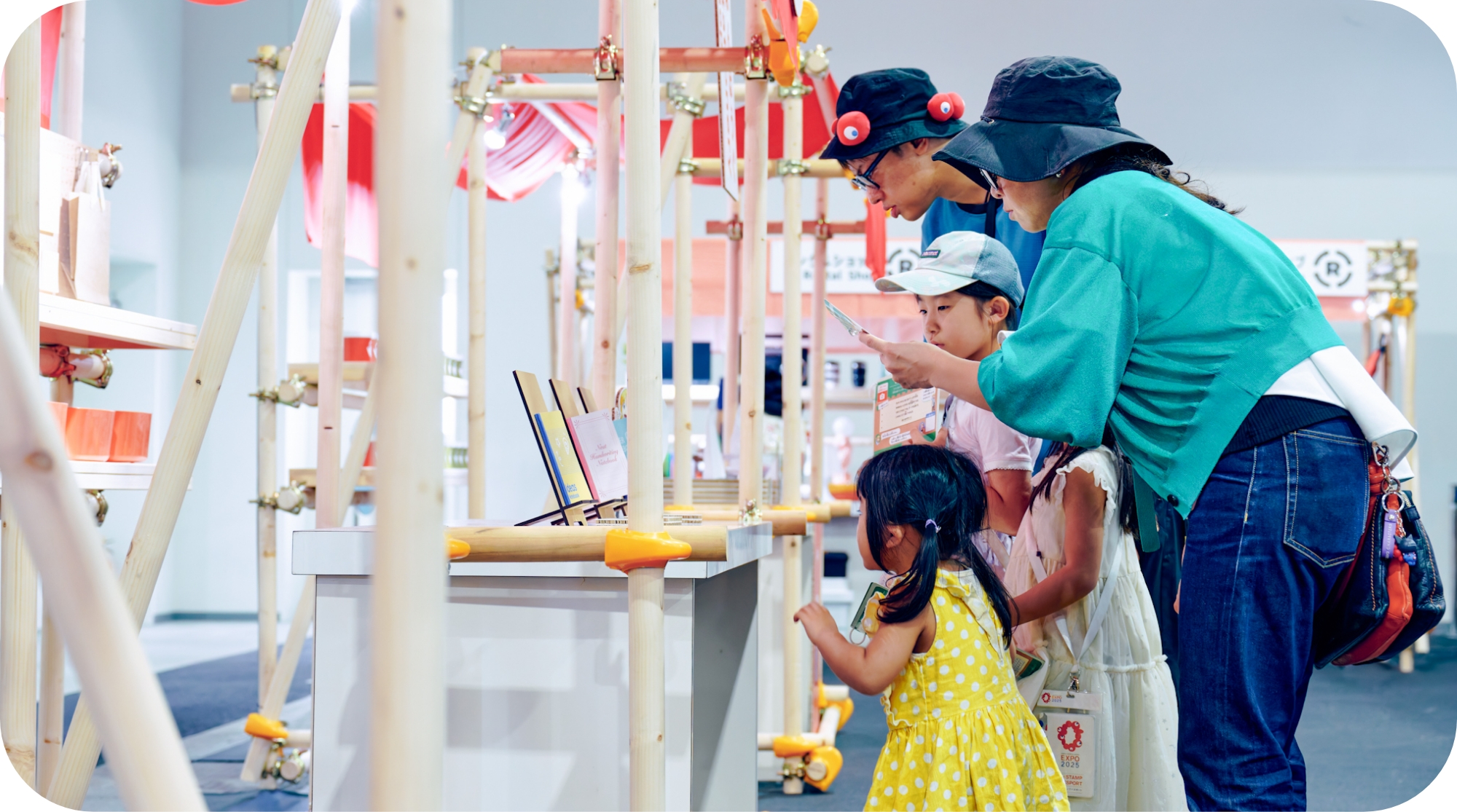
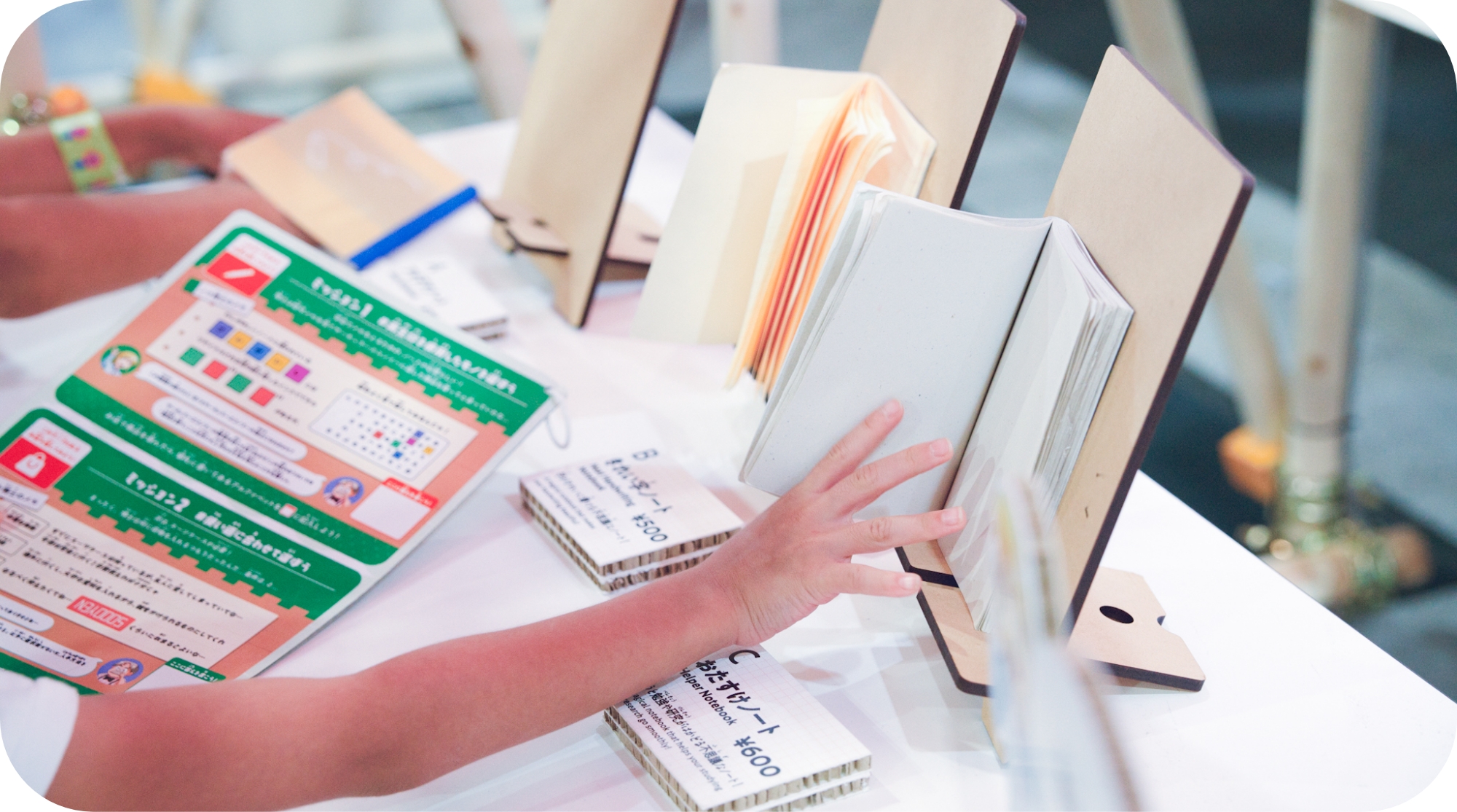
In the mission to find notebooks made from recycled materials, children used the hint “rough-textured paper” and felt the pages to identify the right ones.


− USE −Extending the life of what you own
forms the foundation of circularity
A key principle of the Circular Economy is to “use what you buy for as long as possible and with care.” But this doesn’t have to mean putting up with inconvenience or forcing yourself to make do. With a little creativity and ingenuity, it can actually be enjoyable.
A great example is repairing or remaking clothing. You might patch a small tear in your favorite jeans with a fun embroidered badge, giving them a fresh new look. Or you might tailor one of your mother’s dresses so your child can wear it. By making these small changes, items don’t just last longer — they take on new stories and are reborn in new forms.
It’s about moving from a “throw it away when it breaks or when you’re bored” mindset to one where “if it breaks, fix it” is the norm. Treating your belongings with affection and living alongside the stories they carry not only helps preserve valuable resources but also enriches your daily life in new ways.
In fact, more and more companies now offer repair services as part of their business. So the next time you find a tear or malfunction you can’t fix yourself, instead of throwing the item away, look for a place that can repair it — that, too, is an important action that helps keep things circulating.
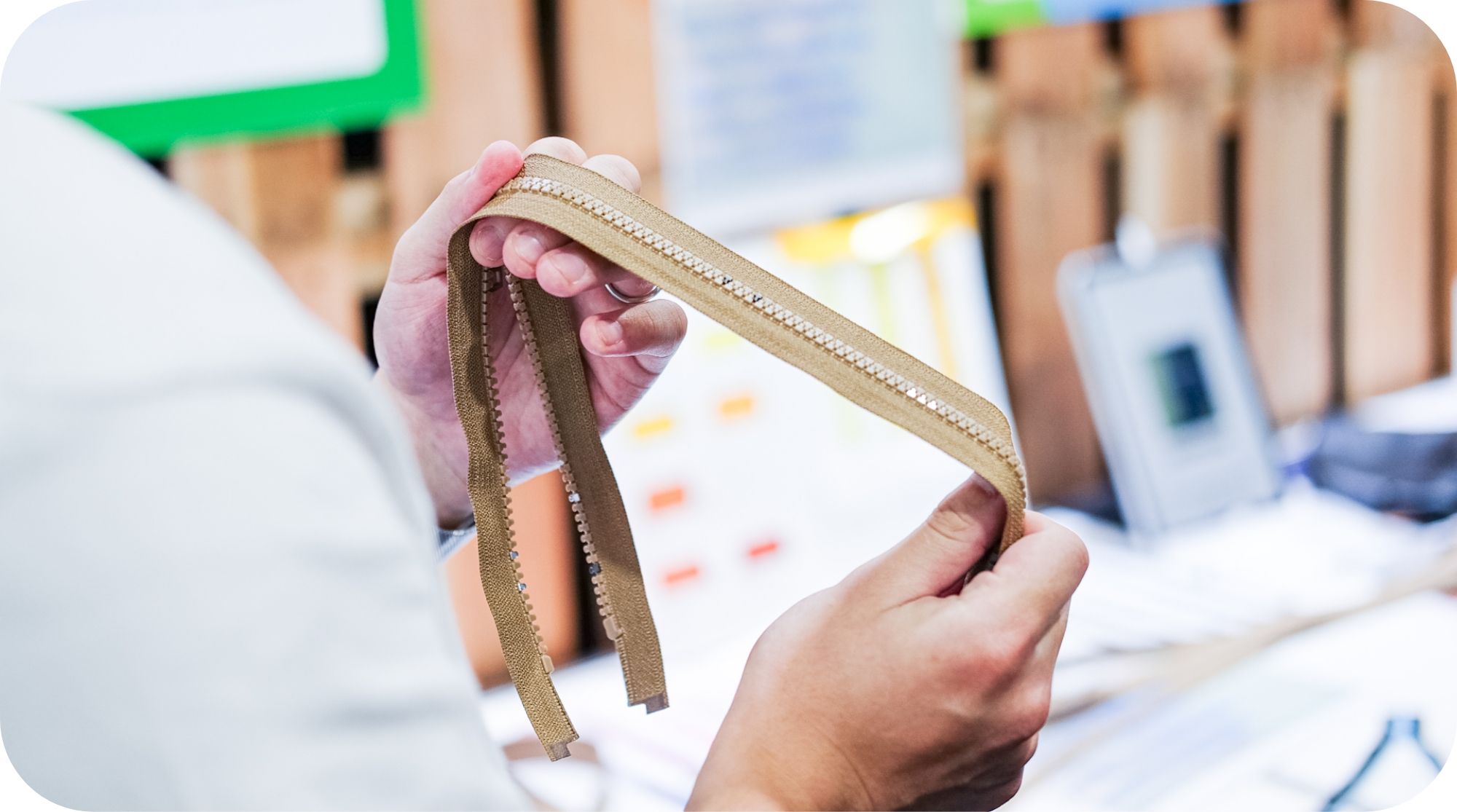
For example, one exhibiting zipper manufacturer showcased “repair-ready elements” that allow only the damaged parts to be replaced. Currently available in limited sizes, the lineup is expected to expand in the future.


− SORT −Throw it away and it’s waste
— sort it and it becomes a resource.
Sorting reveals hidden value
No matter how carefully we use our belongings, everything eventually reaches the end of its life. When that time comes, the important question is how we part with it — because that choice determines whether the item can continue its circular journey.
If something is sorted incorrectly, its path as a resource ends there, and it may end up being incinerated or sent to landfill. But when sorted properly, it can be reborn as raw material and given a new opportunity to serve a purpose once again.
So, do you know how to really sort waste in your local area? You may be surprised by how many items you throw away without being entirely sure of the rules. At Expo 2025, an interactive exhibit invited visitors to experience firsthand just how important sorting is — let’s take a look at what that was like!
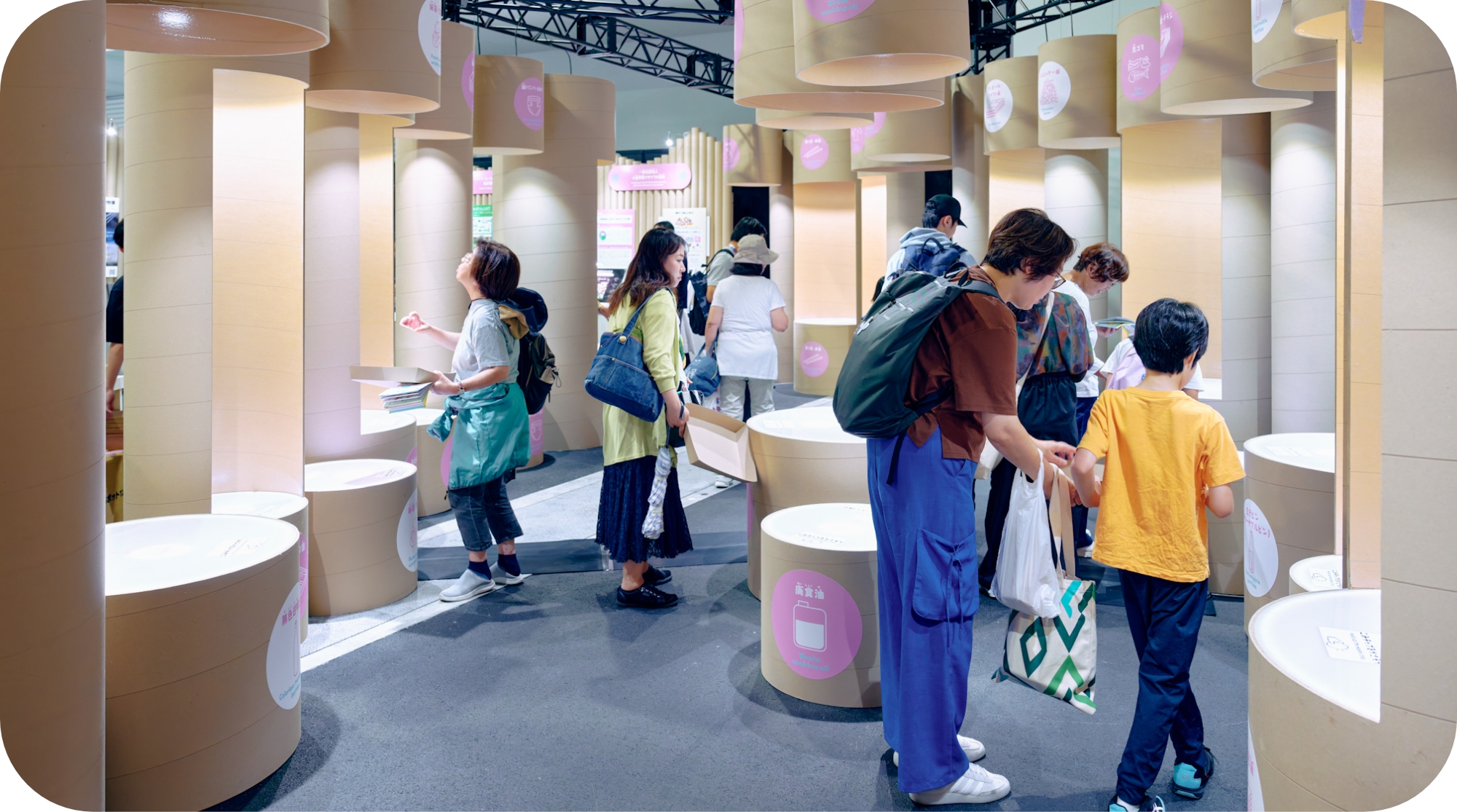
Lining the entire wall were 28 different boxes each labeled with words like:
copy paper, fluorescent and LED bulbs, colored food and beverage bottles, batteries and mobile chargers, empty cans, magazines and mixed paper, paper cartons, spray cans and gas canisters, empty bottles and returnable bottles, clear glass bottles, plastics, PET bottles, paper boxes and wrapping paper, small appliances, used clothing and fabrics, ceramics, cardboard and kraft paper, shredded paper, newspapers and flyers, mixed metals, disposable chopsticks and skewers, disposable diapers, composite materials (paper mixed with other materials), used cooking oil, food waste, general waste, and bulky waste
Yes — these are all categories for waste separation. The display reproduced the waste-sorting rules of Osaki Town in Kagoshima Prefecture, one of the municipalities in Japan with the most detailed separation system. And believe it or not, Kamikatsu Town in Tokushima Prefecture goes even further — dividing waste into as many as 43 categories.
At the venue, visitors received a small “waste chip.” When they held it up to the correct box, it would light up — but if they chose the wrong one, a buzzer would sound. Both adults and children were drawn in, exclaiming, “Wait, there are this many kinds of bottles?” “This is harder than I thought!” and “This is so much fun!” as they eagerly took on the challenge.
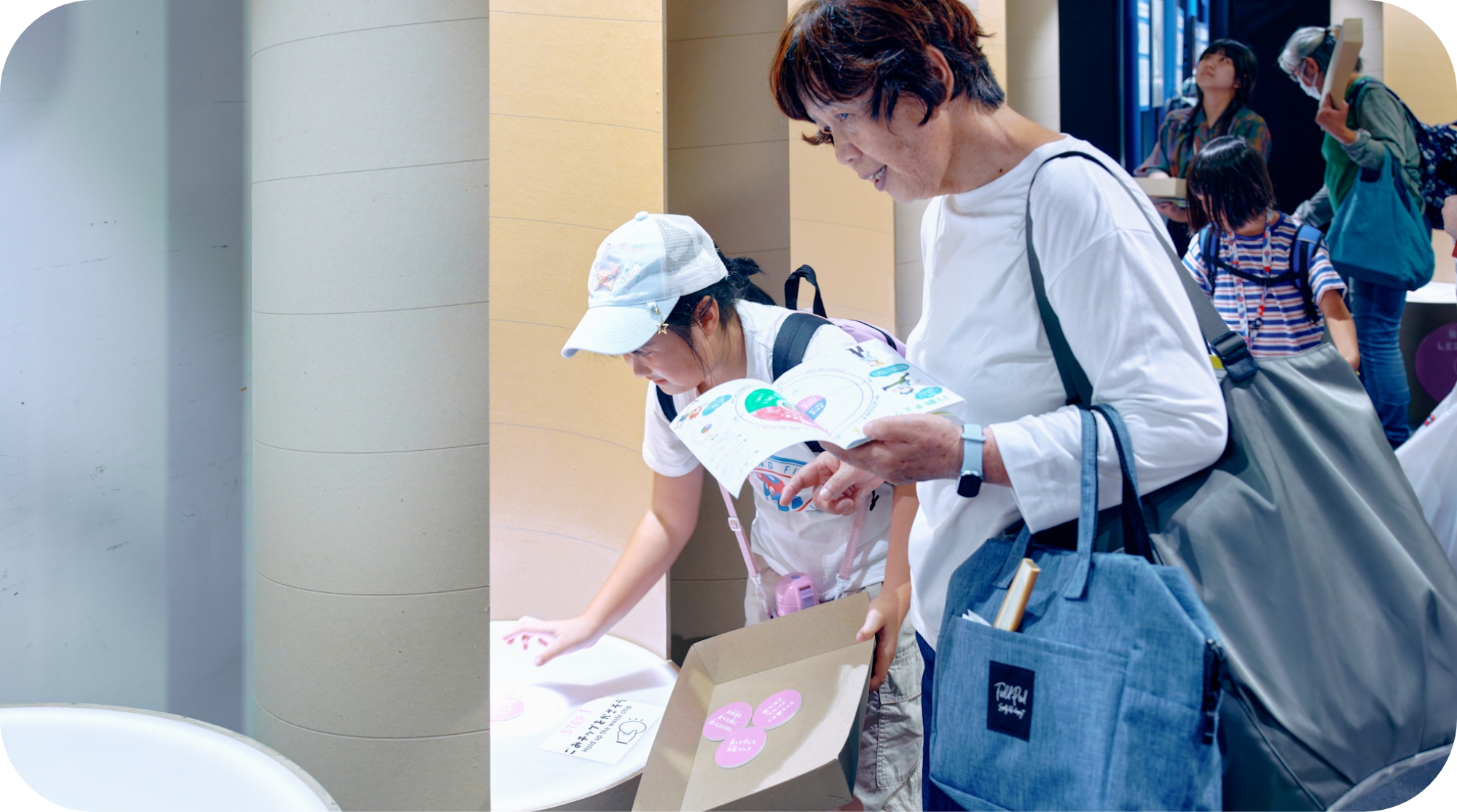
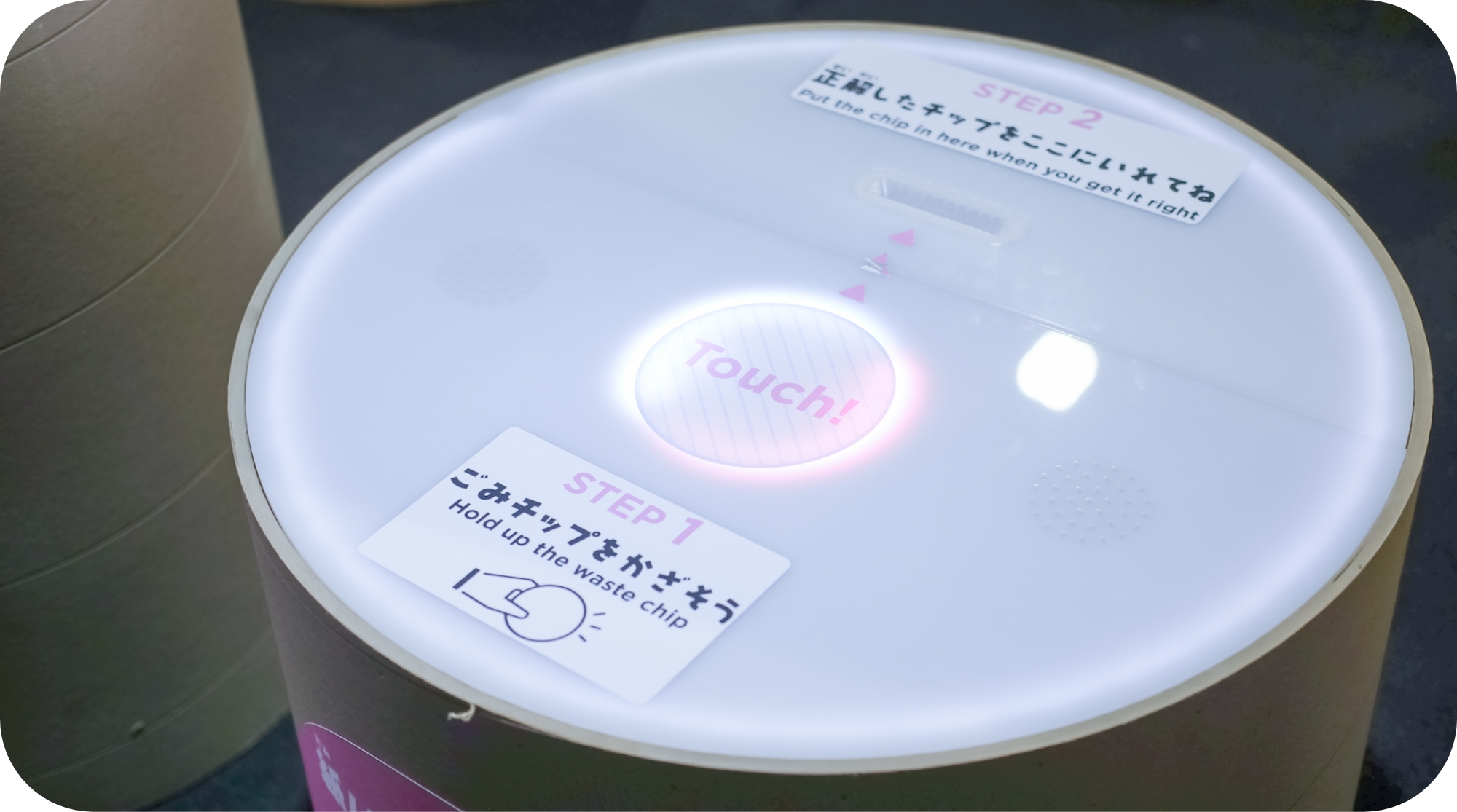
One item that tripped up many visitors was the paper cup. When sorting paper cups, which category would you choose?
- General waste
- Paper waste
- Composite materials (paper combined with other materials)
- Plastic waste
Check your answer below — and as you do, think about how your own community might handle it!
These kinds of hidden “surprises” in waste-sorting rules are more common than you might think. Yet once we toss something into the bin, we rarely get feedback on whether we sorted it correctly. That’s why it’s so important to take a moment to review your local sorting rules — a simple but essential step to keep materials circulating and prevent the cycle from breaking.


− PASS ON −Recycling breathes new life
into what has been sorted
Once items have been carefully sorted and are ready to become resources, there are several ways they can be reborn as new products. Let’s take plastics as an example.
When used plastics are crushed, washed, and turned back into raw material for new plastic products, the process is called material recycling. In contrast, when plastics are chemically broken down before being turned back into raw materials, it’s known as chemical recycling.
A familiar example is the PET bottle. As seen in the “SORT” section, many people separate PET bottles from other plastics — and that’s precisely to make material recycling possible.
Collected PET bottles are crushed and cleaned at a factory, then transformed once again into new PET bottles. For this recycling process to work properly, our small effort to sort correctly is absolutely essential.
And recycling doesn’t always mean the same product is reborn. Sometimes materials are reused in entirely new forms as recycled materials, becoming something completely different. Paying attention to what things are made from may also inspire you to make new choices the next time you BUY something.

Visitors could turn a handle to experience how items look before and after being recycled. Other exhibits showcased surprising innovations — such as technology that collects carbon dioxide from the air to make carbonated drinks, and initiatives that transform discarded fishing nets from the sea into backpacks.
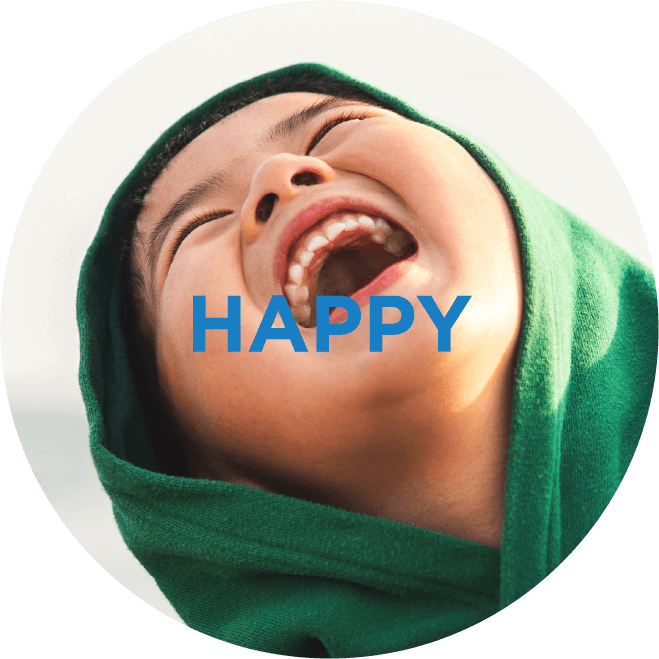


Passing the
Circular Economy on to the future
We’ve explored the Circular Economy through four lenses — BUY, USE, SORT, and PASS ON. Looking back, you may have realized that some of these ideas are things you’re already doing, or that they’re much closer to your everyday life than you thought.
What’s most important is that these four actions are all connected. The way we choose what to BUY, the care we show when we USE things, and the small effort we make to SORT them — all of these decisions influence how those items can later be PASSED ON. Together, they shape the future of circularity.
At Expo 2025, we had the opportunity to share these lessons with visitors firsthand. Over the course of seven days, the event drew an impressive 58,723 attendees. We extend our heartfelt thanks to everyone who joined us.
And this initiative doesn’t end with the Expo. Starting in the fall of 2025, the Circular Economy Lab will expand nationwide — with events confirmed in Toyama on October 18 (Sat.) and Kyoto on November 29 (Sat.), followed by future sessions in Saitama and Tokyo. Updates will continue to be shared on this website, so stay tuned!













